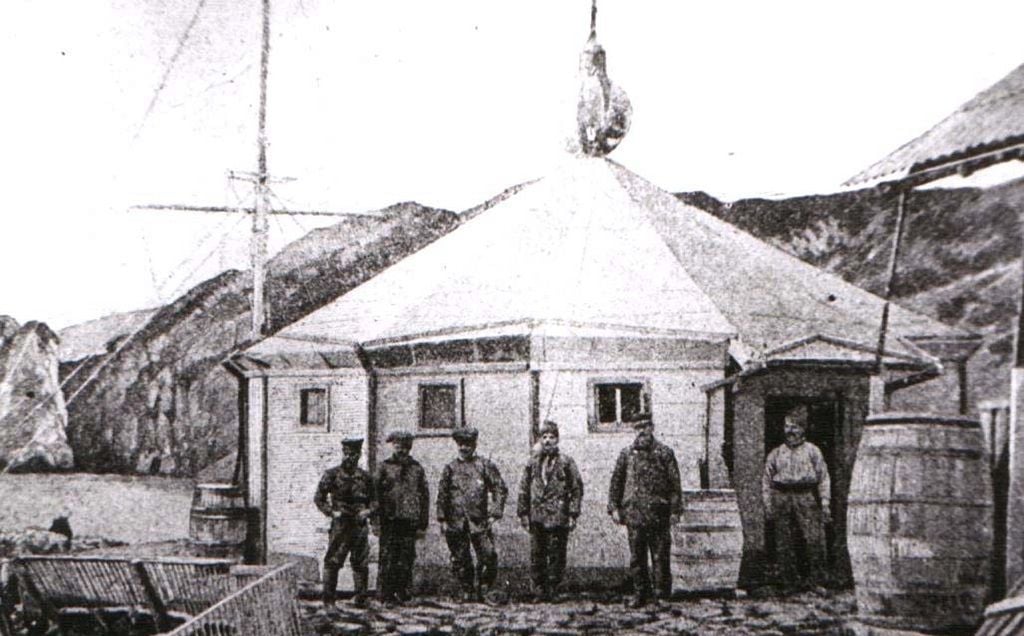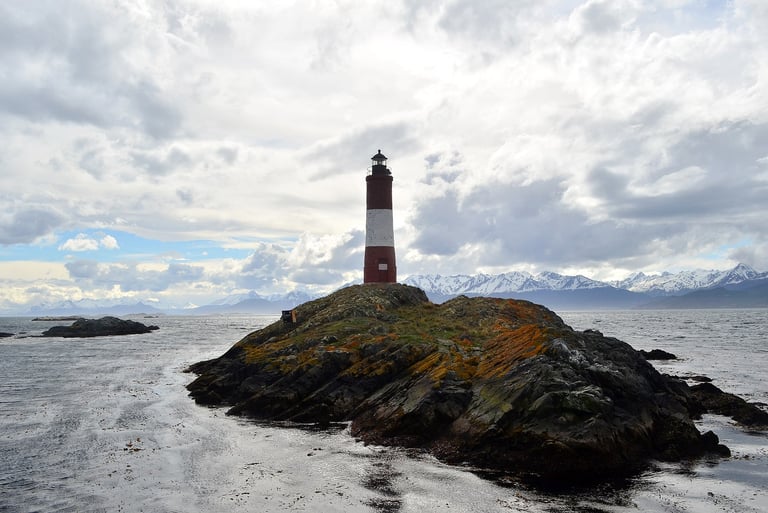End of the World Lighthouse: Where Light Meets the Abyss
El Faro del Fin del Mundo isn’t just a lighthouse—it’s a symbol of isolation, memory, and resilience at the edge of Argentina. Where light meets wind, and fiction meets truth.
PATAGONIATIERRA DEL FUEGOTRAVEL
Gabriela Arellano
7/11/20253 min read


El Faro del Fin del Mundo: Myths, Solitude, and the Southern Sea
At the edge of Argentina, lashed by wind and memory, stands a lighthouse few will ever see with their own eyes. El Faro del Fin del Mundo, perched on the haunted shores of Isla de los Estados, is more than a beacon. It is a story. A scar. A symbol.
Built in 1884, the Faro San Juan de Salvamento was the southernmost lighthouse in the world at the time. Tasked with guiding ships through the nightmare waters near Cape Horn, it soon became a prison of solitude for the men who lived there. A place where time eroded sanity, and the sea swallowed sound.
🌊 A Beacon in the Storm
The lighthouse was constructed from wood and iron and operated under impossible conditions. Isolated. Buffeted by winds that roared without pause. The men assigned to it were cut off from the world for months on end. According to accounts, the rain often fell horizontally, the fog swallowed voices, and more than one keeper was said to have lost his grip on reality.
By 1902, it was abandoned. Nature had won. But the myth was just beginning.
🔮 Jules Verne and the Birth of Legend
Jules Verne, intrigued by the idea of this lonely sentinel, never visited the lighthouse but immortalized it in his 1905 novel, Le Phare du bout du monde. The story dramatized the lighthouse as a last human outpost against pirate attacks and existential dread.
Verne's tale transformed the faro into more than history; it became fiction, metaphor, warning. In his pages, the structure became a confrontation between light and lawlessness, solitude and savagery.
✨ Myths and Murmurs
Locals and maritime travelers have long whispered about the strange energies of Isla de los Estados. Some speak of ghost ships, seen drifting near the coast on moonless nights. Others tell of a mysterious light, blinking where no lighthouse stands, long after the real one had fallen into ruin.
There are stories of a keeper who vanished, leaving only his journal filled with scrawled poetry and incoherent warnings. And of another who, unable to bear the isolation, walked into the sea one morning and was never seen again.
Whether these stories are true or not hardly matters. The lighthouse invites them. It was built for silence. And silence breeds story.
🔦 Les Éclaireurs and the Mistaken Identity
Many visitors to Ushuaia believe they’ve seen the famous "Lighthouse at the End of the World" when they spot the striking Faro Les Éclaireurs in the Beagle Channel. Painted in red and white bands and perched dramatically on a rocky islet, it’s certainly photogenic—and easier to reach.
But Les Éclaireurs is not Verne's lighthouse. That one, Faro San Juan de Salvamento, stood (and stands again, as a replica) far to the east, on Isla de los Estados, a wild and uninhabited island battered by a more brutal sea.
The confusion endures because Les Éclaireurs is accessible, romantic, and conveniently positioned for postcards. But the true faro—the one built in 1884, the one abandoned to the weather and resurrected by memory—belongs to a harsher map.
And maybe that's fitting. The real end of the world is never easy to reach.


⚖️ A Replica and a Reverence
In 1998, a replica of the original faro was built, standing where its predecessor had once defied the storm. A gesture of memory. A symbol of Franco-Argentine cooperation. A lighthouse not to guide, but to remember.
It now watches over a coastline still ruled by wind, still scarred by wreckage, still whispering to the few travelers who reach it.
🕷️ Standing at the End
To visit El Faro del Fin del Mundo is to touch the edge—not just of Argentina, but of something internal. The boundary where history becomes myth. Where solitude becomes mirror.
Here, the wind speaks in tongues. The sea watches. And the light, fragile as memory, continues to shine.
🌍 If You Go
Location: Isla de los Estados, Tierra del Fuego, Argentina
Access: Only by special expedition from Ushuaia, often in collaboration with the Argentine Navy
Best Time: Summer months, weather permitting
Note: The island is a natural reserve and access is highly regulated
In the end, the lighthouse does not ask you to believe. Only to remember. And to listen—to the waves, to the wind, to the stories that flicker like a lamp in the dark.
To visit the lighthouse is not to find answers. It is to meet a question, standing still in the wind.
A question shaped like a tower, painted in memory, lit by the edge of the world.
Explore more posts in our Travel category
Know Argentina
Discover diverse insights about Argentina's rich culture.
Connect
stay in the loop
info@knowargentina.com
© 2025. All rights reserved.
